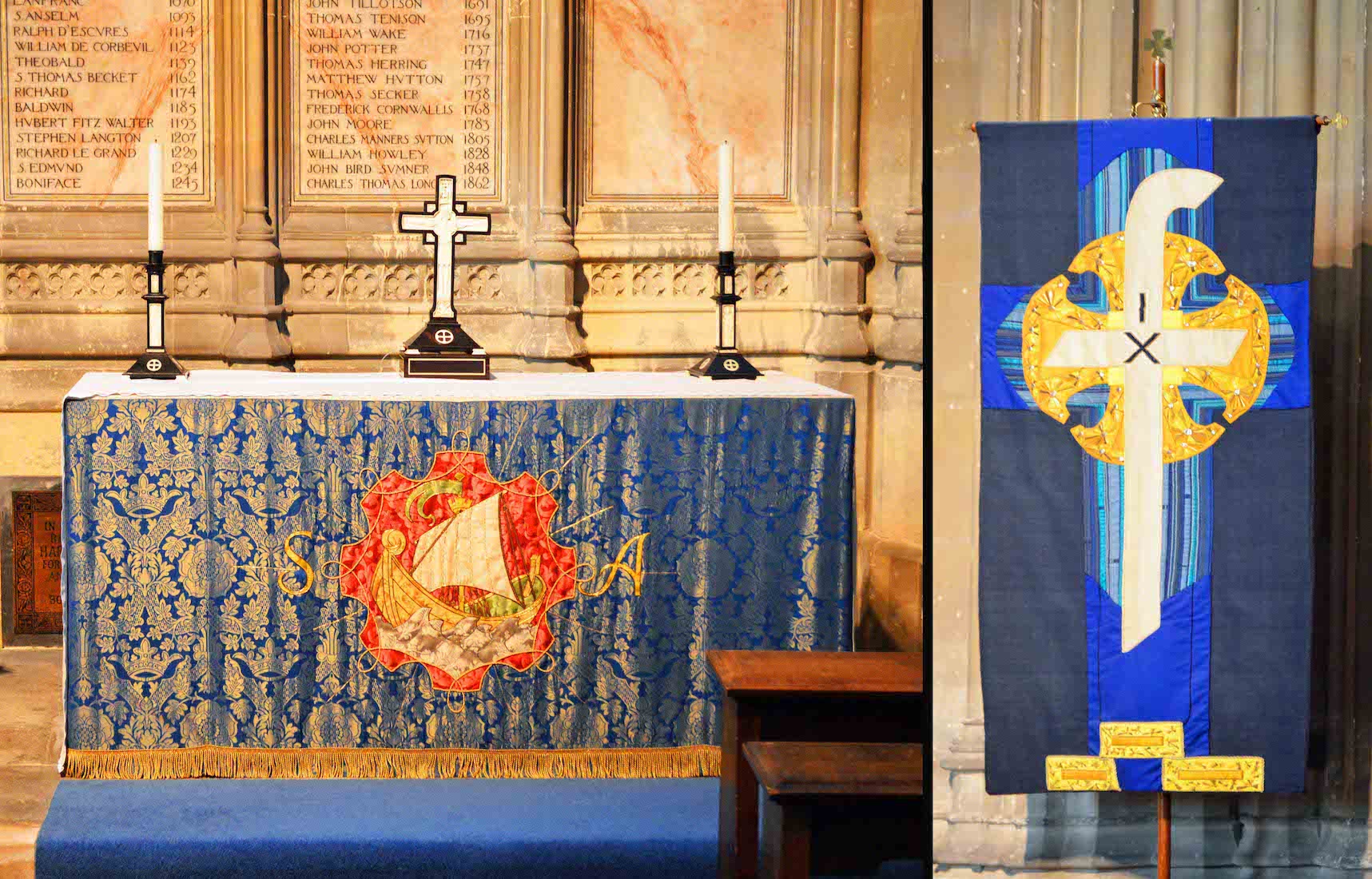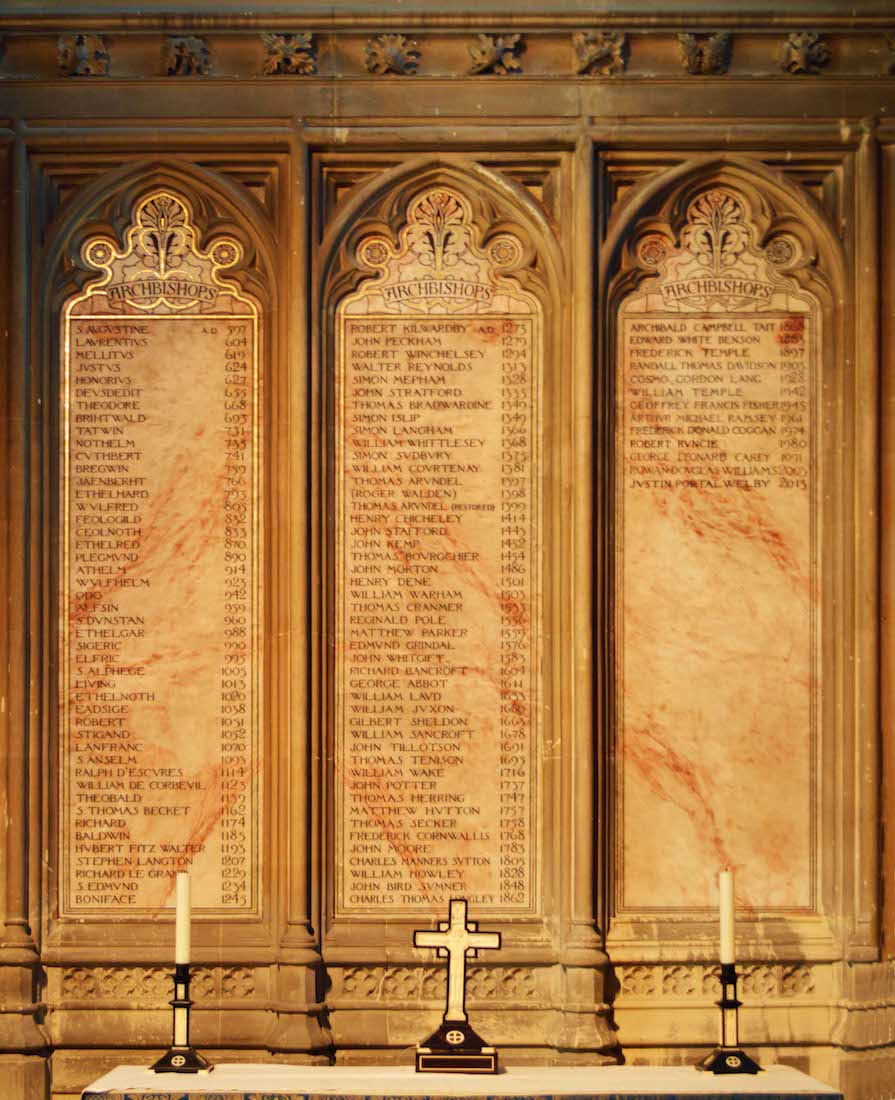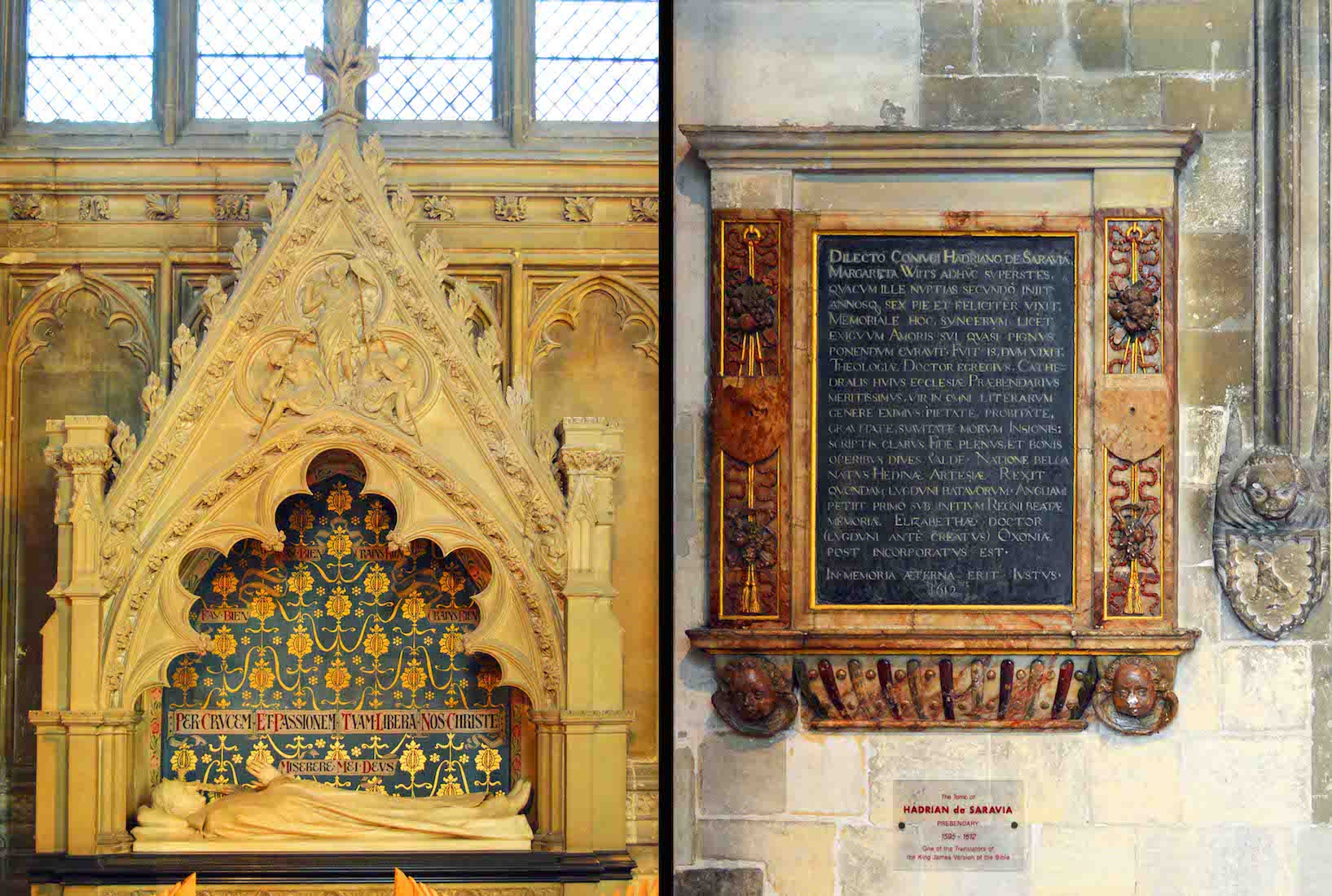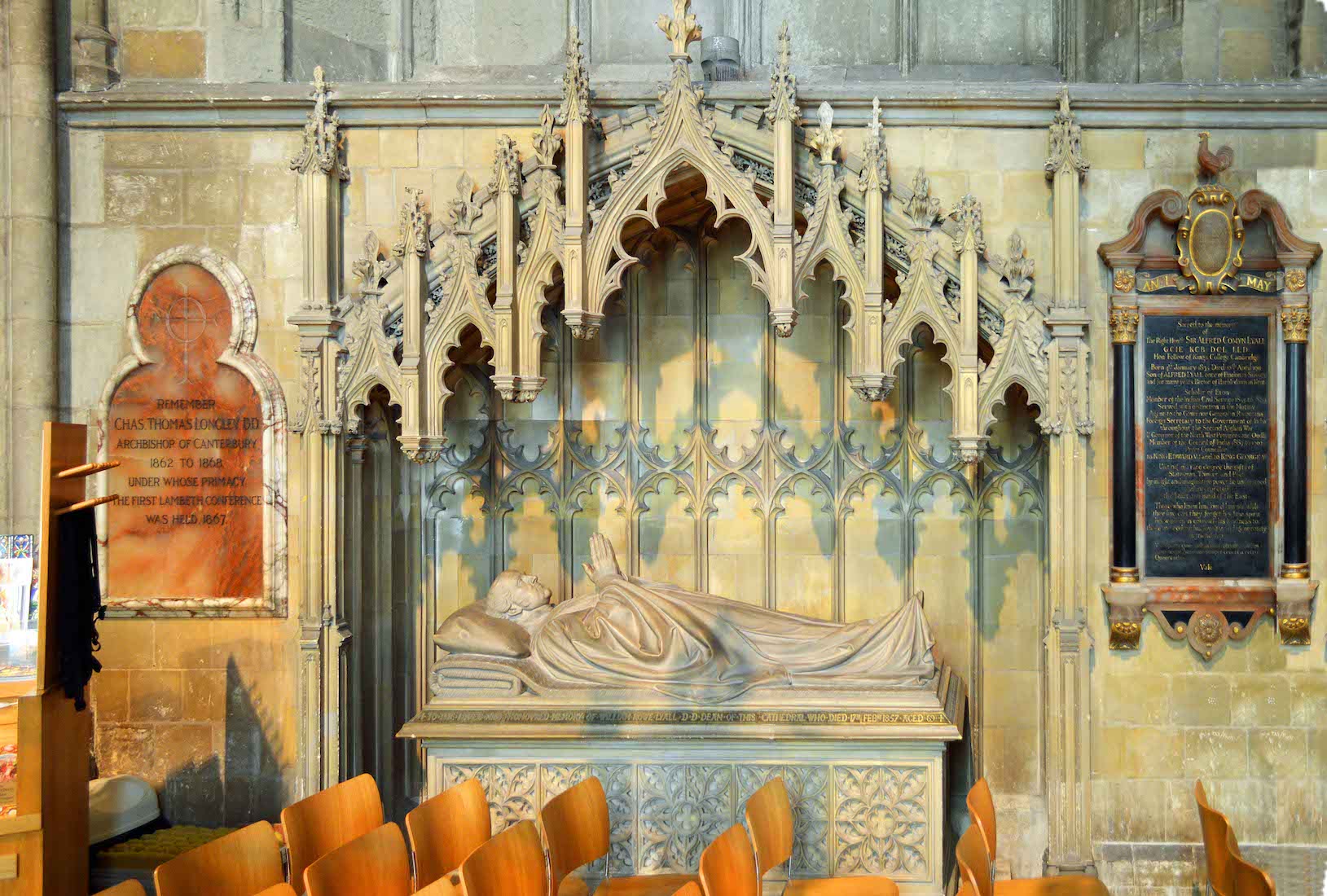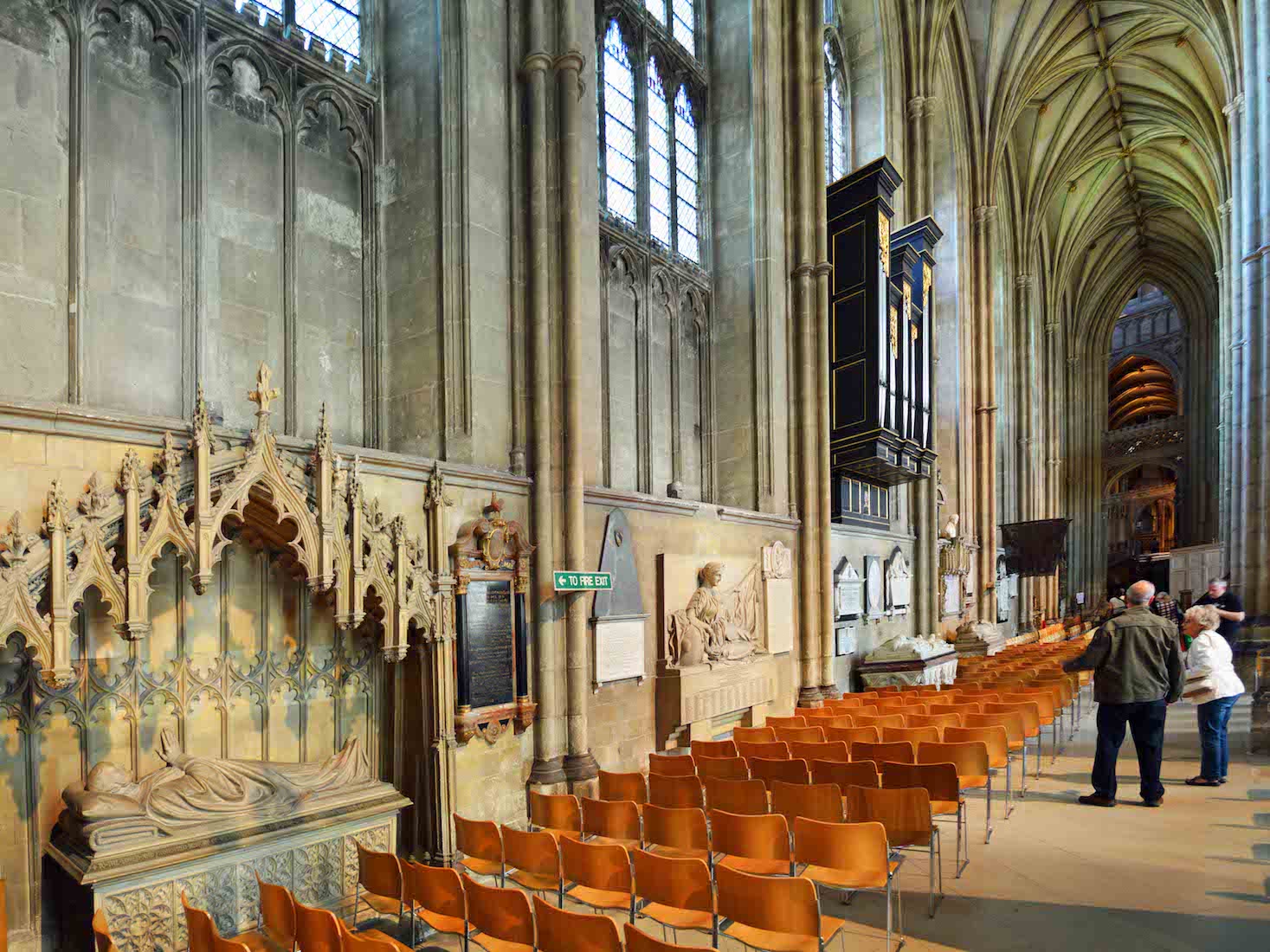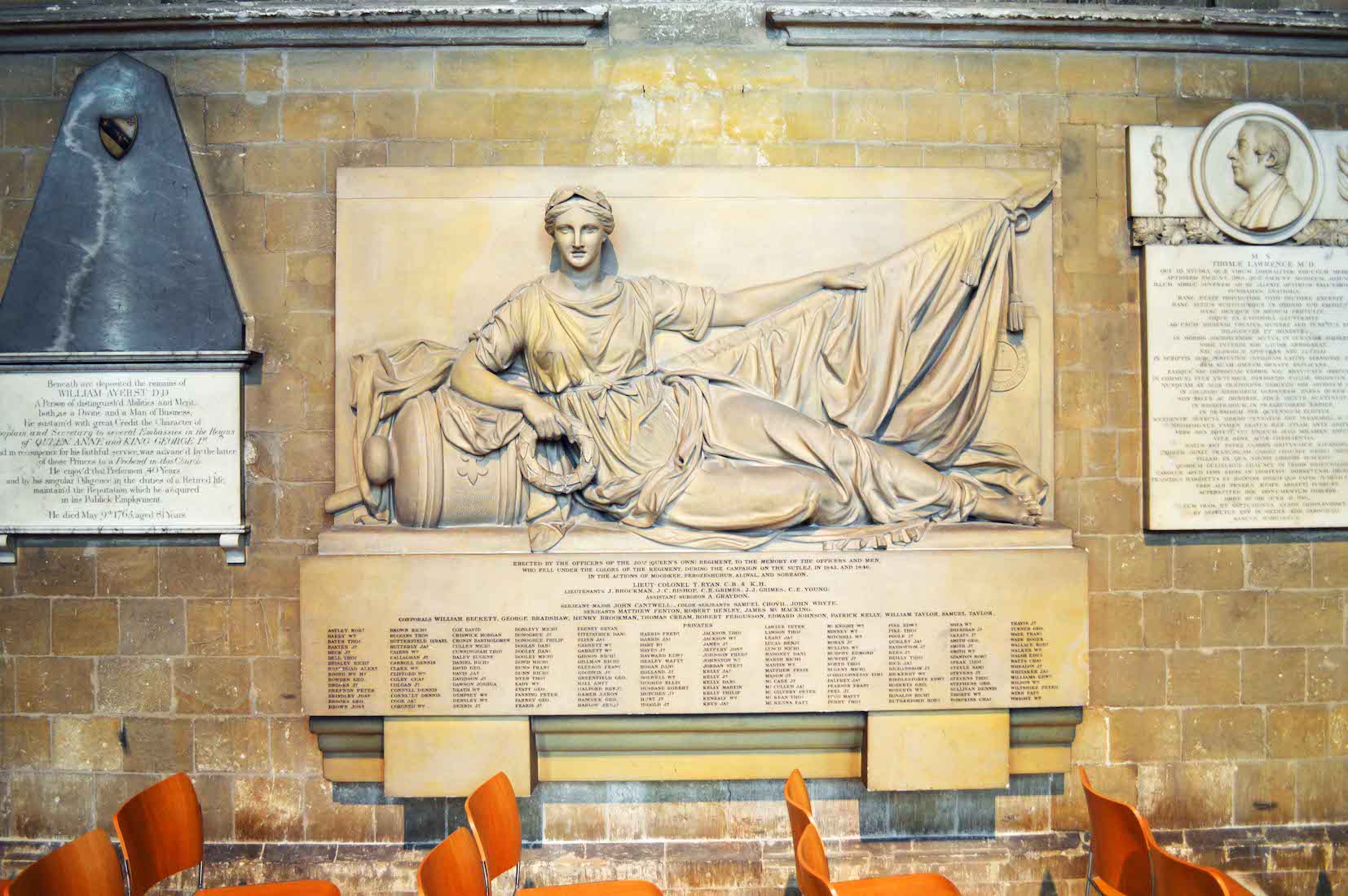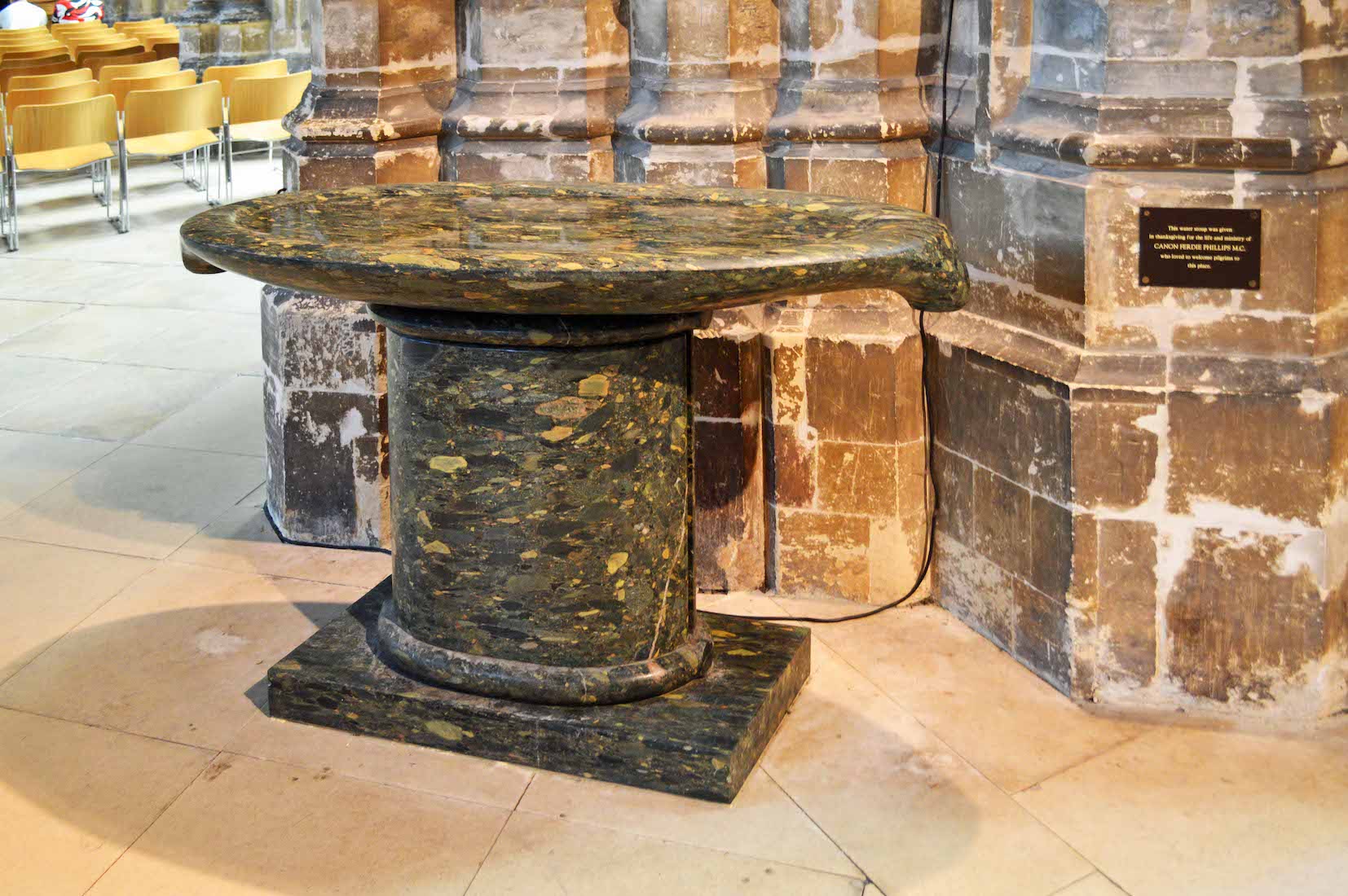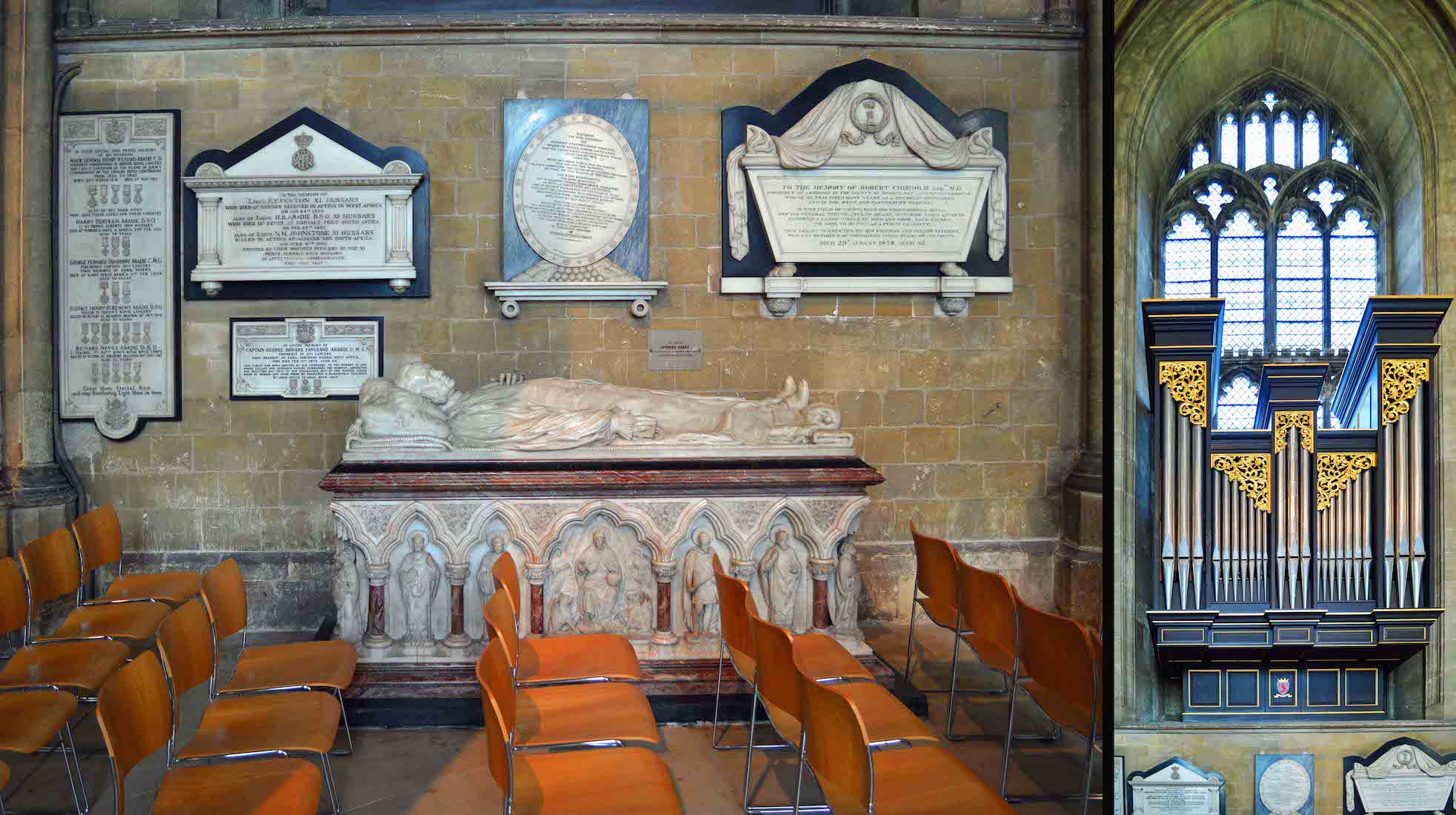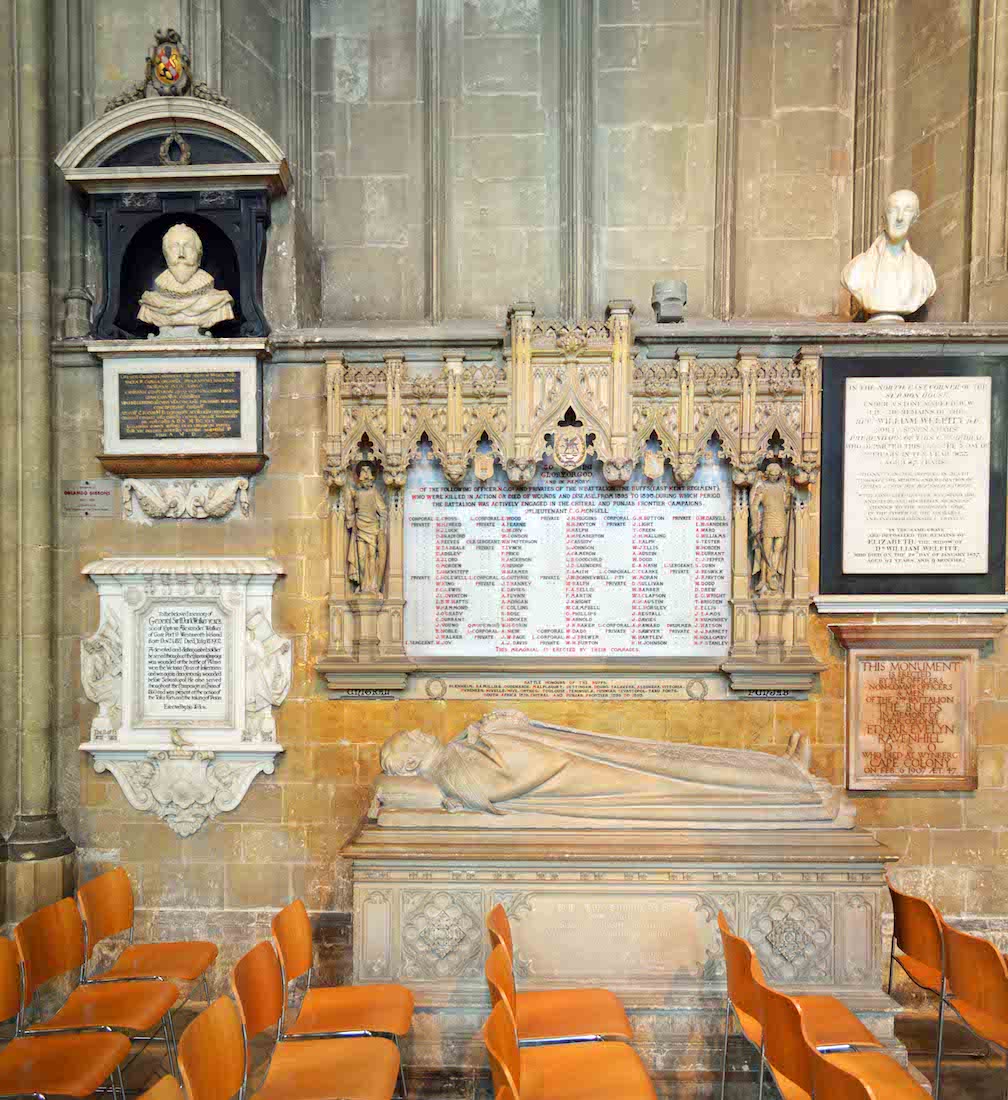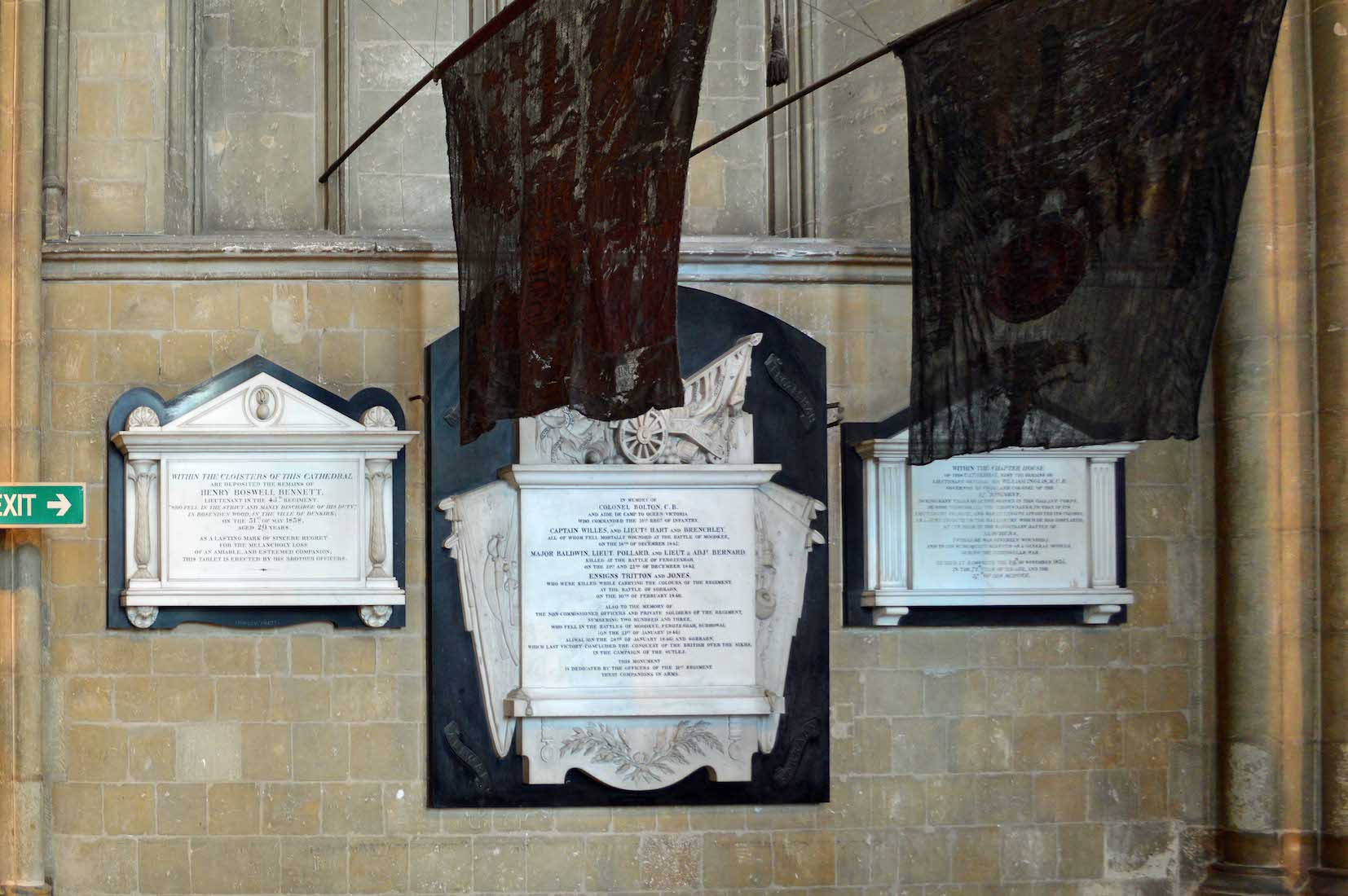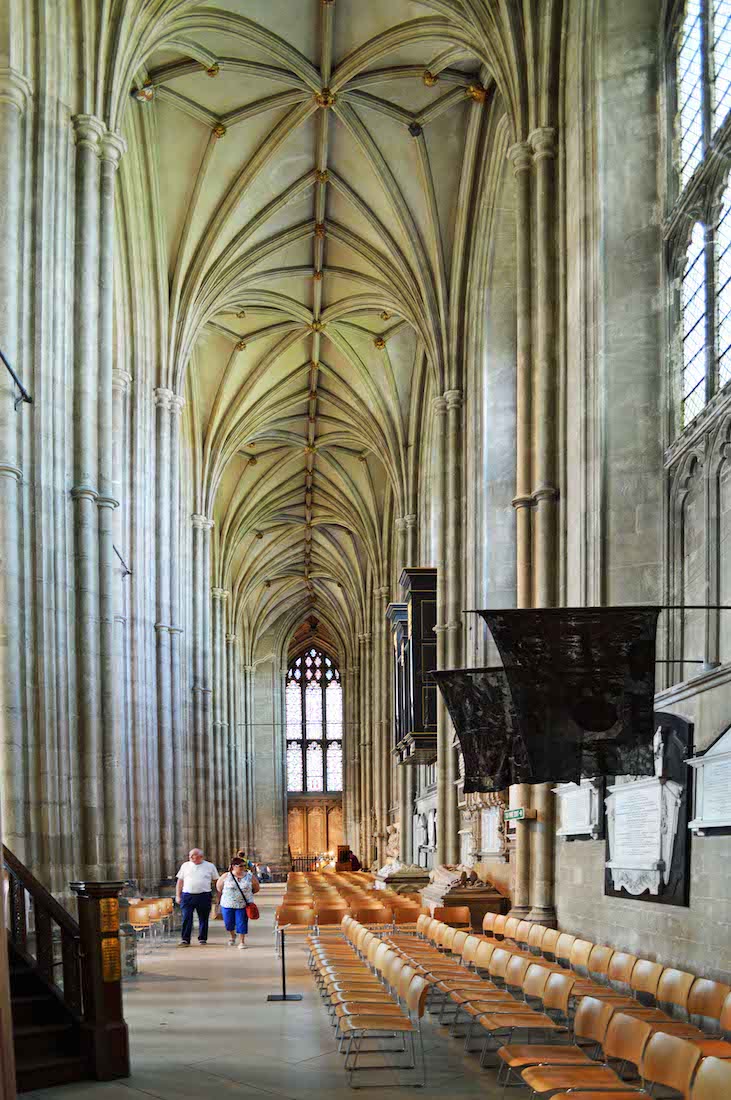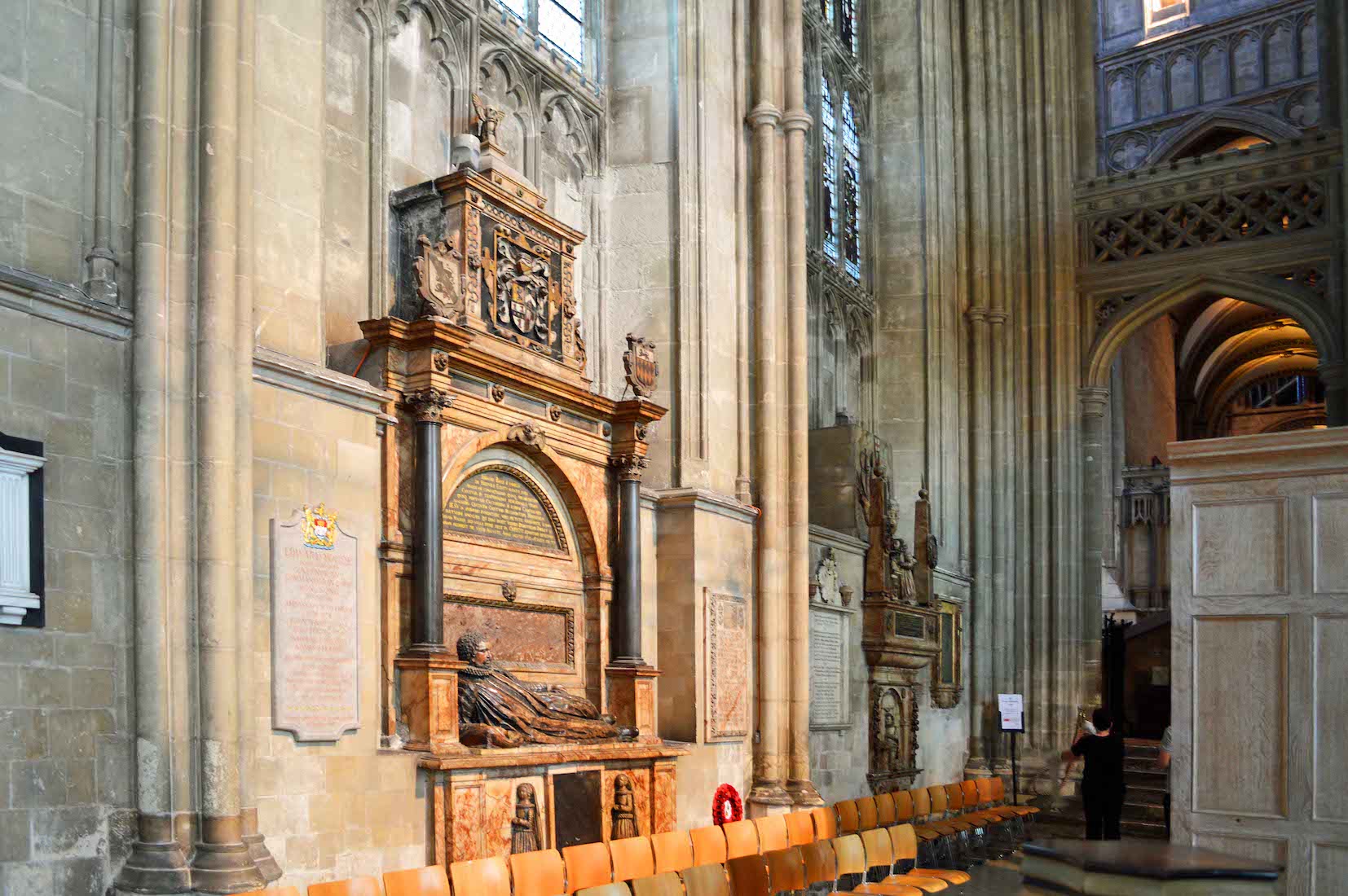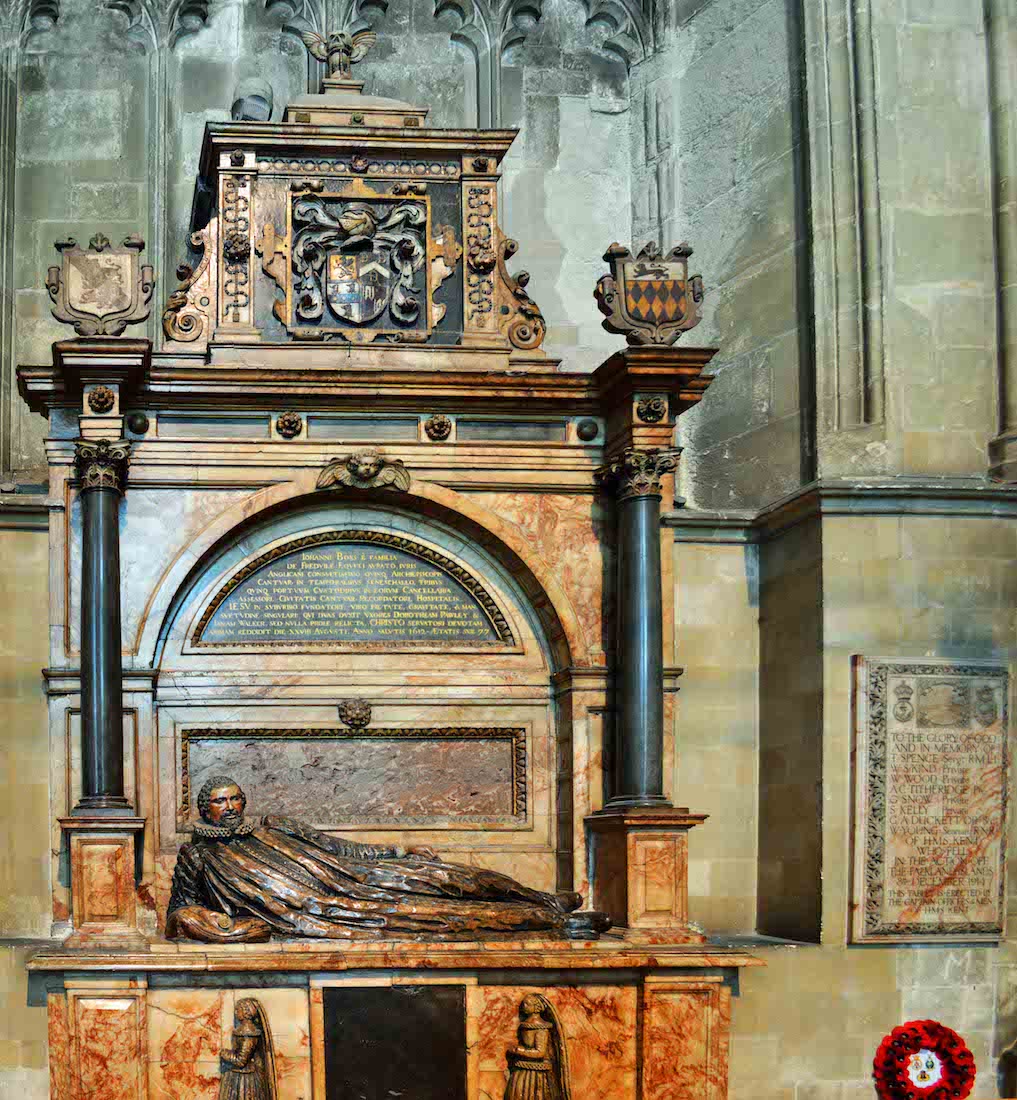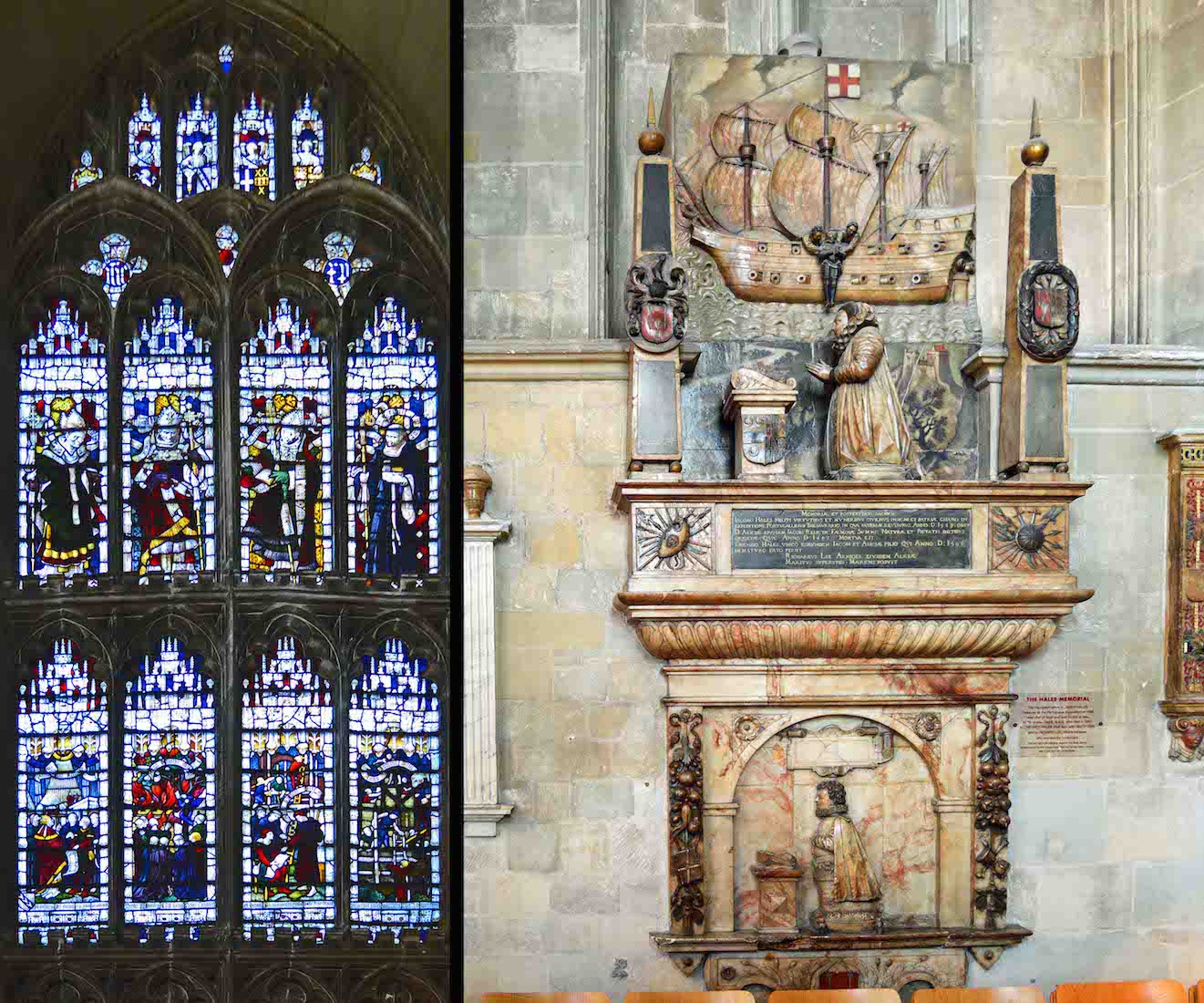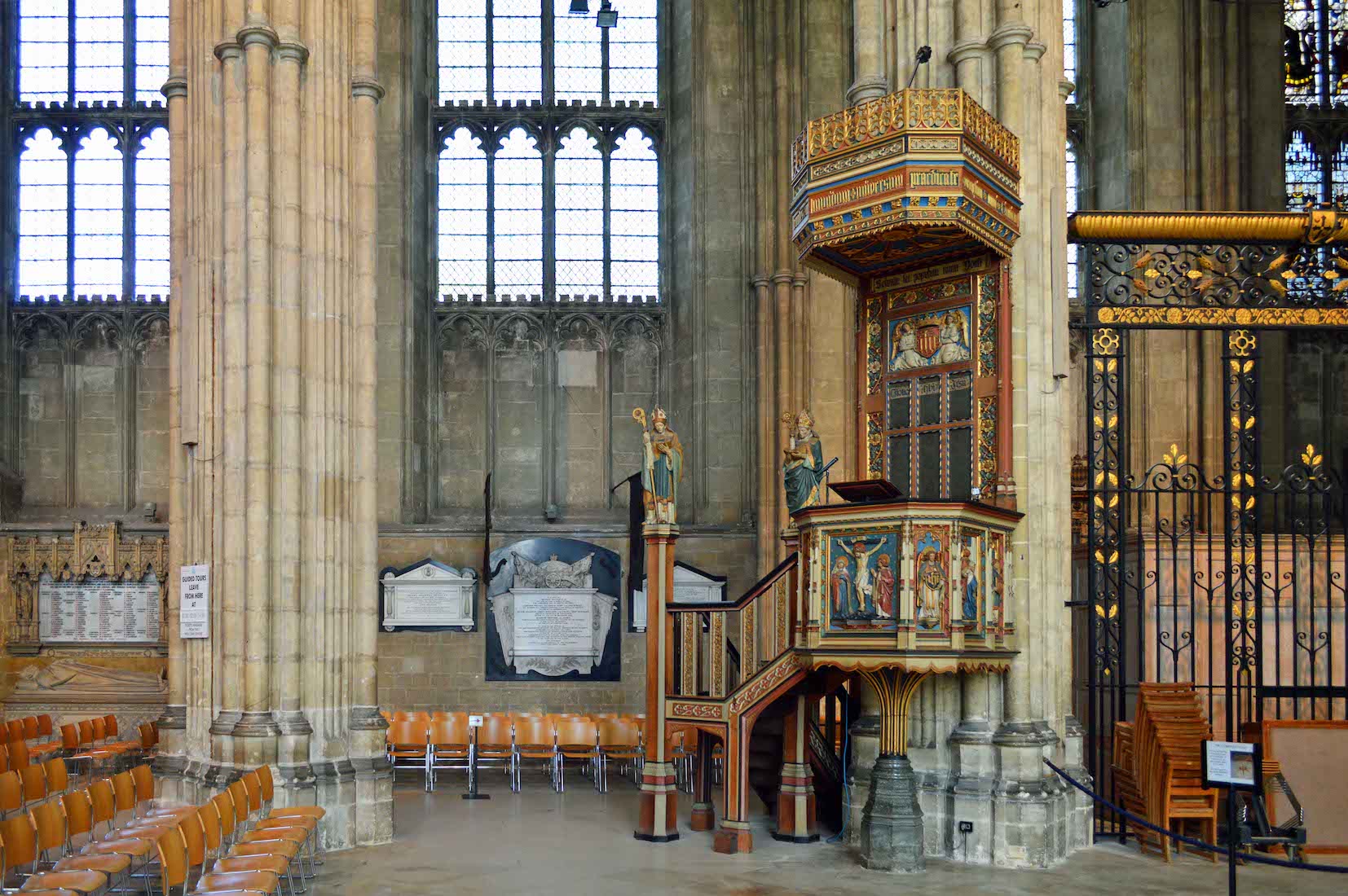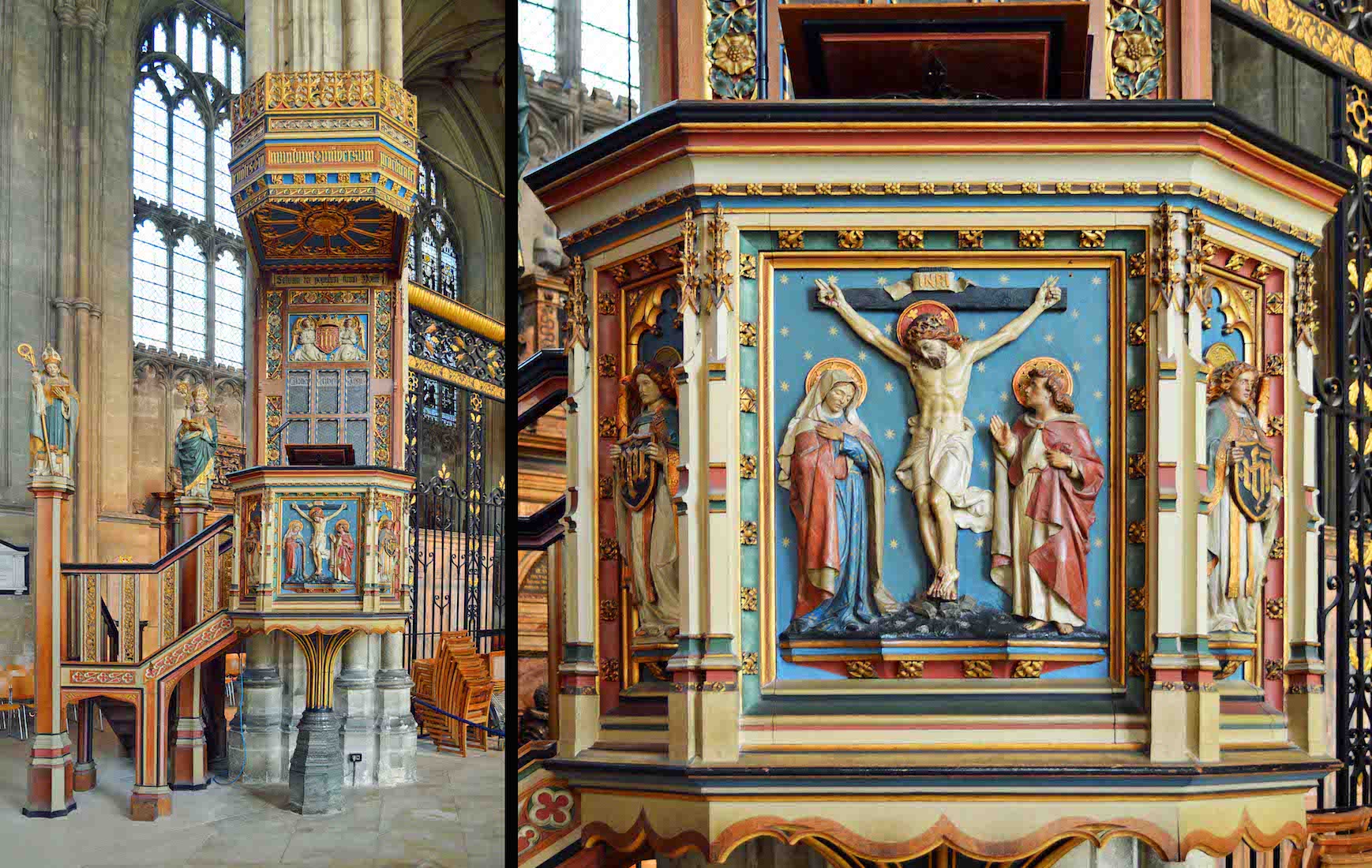41. CLERGY LIST AND CHRIST FIGURE

The old list of Cathedral Clergy contains names of Deans and Priors from as long ago as AD 820. Amazing! The carved figure of Christ is found on one of the back columns of the nave. PLAN
42. WEST WALL NORTH
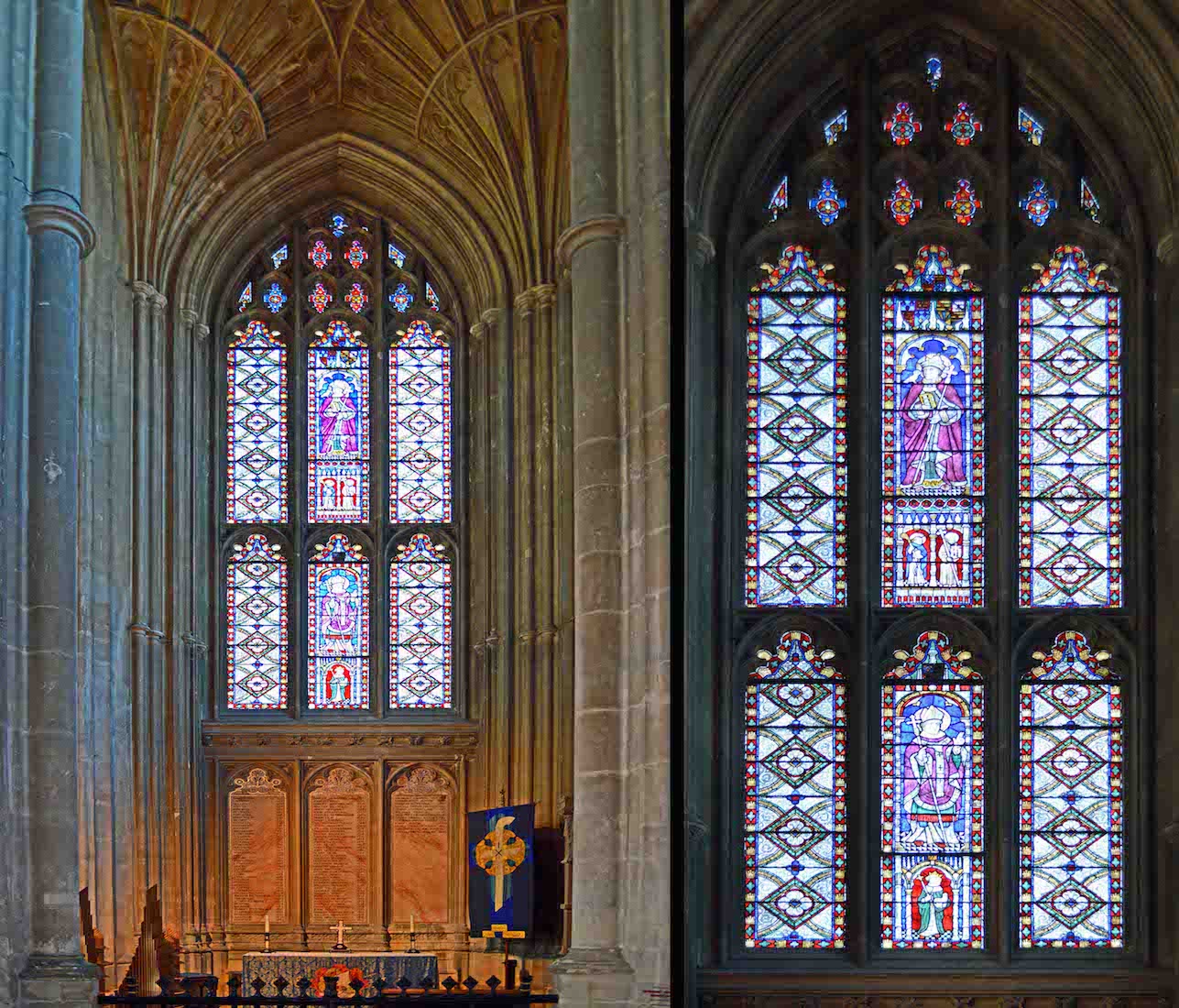
The West wall on the North side reflects the South side in layout. The window features bishops rather than kings, there is a list below the window, and an added altar and banner.
43. ALTAR AND BANNER
The simple altar is covered by a cloth showing an old sailing ship with the initials S and A on either side. I conjecture a reference to St Augustine arriving in England by boat in 597. The banner displays a curious cross in the shape of an ‘f’ with IX superimposed.
44. LIST OF ARCHBISHOPS
This list of archbishops dates from St Augustine in AD 597. The two most recent additions are Rowan Williams and Justin Welby.
45. NORTH WALL TOMBS
Right next to the banner on the north wall is the tomb at left of Archbishop Edward White Benson (1829-1896). Benson served as headmaster for Wellington College before becoming the first bishop of Truro and later (1883 until his death) Archbishop of Canterbury. At right is the tomb of Hadrian de Saravia, one of the translators of the King James Version of the Bible.
46. TOMB AND MEMORIALS
The nave side windows are clear glass, but there are various tombs and memorials along the walls. From left a memorial to Archbishop Chas. Thomas Longley (1862 – 1868), the tomb of Dean William Rowe Lyall (died 1857), and a memorial to Sir Alfred Comyn Lyall (1835 – 1911) who was a British civil servant serving in India, literary historian and poet.
47. NAVE NORTH AISLE
A view looking East down the North aisle. The lower section of the windows is blanked out by the Great Cloister. We note further memorials along the wall, and a curious pipe organ feature at one of the windows.
48. MEMORIALS
At left is a memorial to William Ayerst who was ‘advanced a Prebend (stipend) in this Church’. The lovely central monument remembers men of the Queen’s Own Regiment who died in combat in 1845–1846. At right is remembered Royal Physician Thomas Lawrence M.D. (1711 – 1783).
49. BAPTISMAL FONT
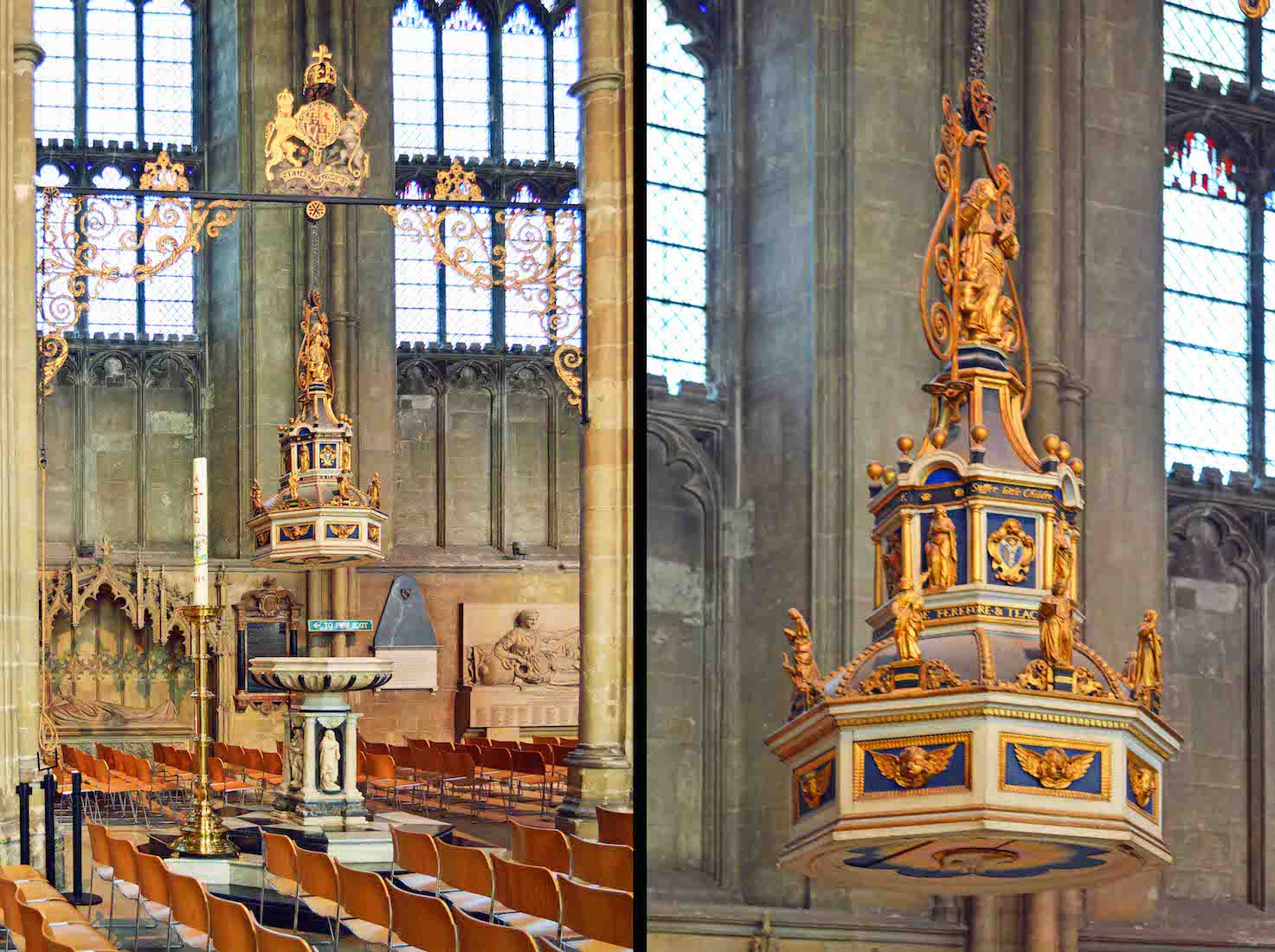
The marble font was given by Bishop Warner of Rochester in 1639. The cover is decorated with the Four Evangelists and other Apostles. It was reputedly smashed by the Puritans in 1643, hidden by William Somner, and then repaired after the Restoration in 1660.
50. WATER STOUP
This water stoup sits close by the font. It was given ‘in thanksgivng for the life and ministry of Canon Ferdie Phillips M.C. who loved to welcome pilgrims to this place’.
51. FURTHER MEMORIALS
The next window has a small set of organ pipes mounted in front. Below we find memorials to Major General Henry Richard Abadie, Lt. F.F. Fenton, Captain George Howard Fanshawe Abadie, Major Robert MacPherson Cairnes, Robert Chisholm, and Edward Parry.
52. LIFE OR DEATH?
Is the Church really about life? Or about death? And can the two be separated? Here we find remembered composer Orlando Gibbons, General SIr Mark Walker, Members of the ‘Buffs’ who died in action, Rev William and Mrs Elizabeth Welfitt, and Colonel Edgar Evelyn Ravenhill. The tomb is of John Bird Sumner (1780 – 1862), Archbishop of Canterbury.
53. COLOURS, MEMORIALS
These memorials are for Lt Henry Boswell Bennett, various soldiers killed in action, and Lt Sir William Inglis. There is an old tradition of having the colours of various disbanded regiments hanging in cathedrals – often looking the worse for wear!
54. NORTH AISLE FROM EAST
Turning around, we can view the aisle from near the flags, looking West. The pulpit is just on our left.
55. NAVE NORTH AISLE EAST
We shall continue walking up the aisle until we get to the decorative (and functional!) arch. Observe the final stained glass window.
56. MEMORIALS
The large monument at left remembers John Boys and family. John Boys (1571 – 1625) was Dean of Canterbury from 1619 to 1625. The tablet at right remembers the men of HMS Kent who were killed in the 1914 action off the Falkland Islands.
57. WINDOW AND MONUMENT
We reach the end of the North aisle, coming to this stained glass window with monument below. The Hales Memorial at right was constructed in 1592, the same year in which Dame Alice Hales died, by her second husband and widower, Richard Lee. At the top of the monument, the burial at sea of Dame Alice's first husband, Sir James Hales is depicted, while Richard Lee, like Dame Alice, is shown kneeling at the bottom of the monument.
58. PULPIT
We retrace our steps along the North aisle to view the pulpit. This carved and painted Revival Gothic pulpit was designed by George Bodley in 1898 as a memorial to Dean R. Payne-Smith. It features saints associated with Canterbury, and is used by the Archbishop at Christmas, Easter, and other special occasions.
59. PULPIT DETAIL
The front panel of the pulpit is adorned with a painted carving of the crucifixion. An angel stands guard on either side, and there are other scenic panels towards the back.
60. PULPIT BISHOPS
Two Bishops on the pulpit are paying close attention ... but who are they?
<– TO PREVIOUS PAGE


